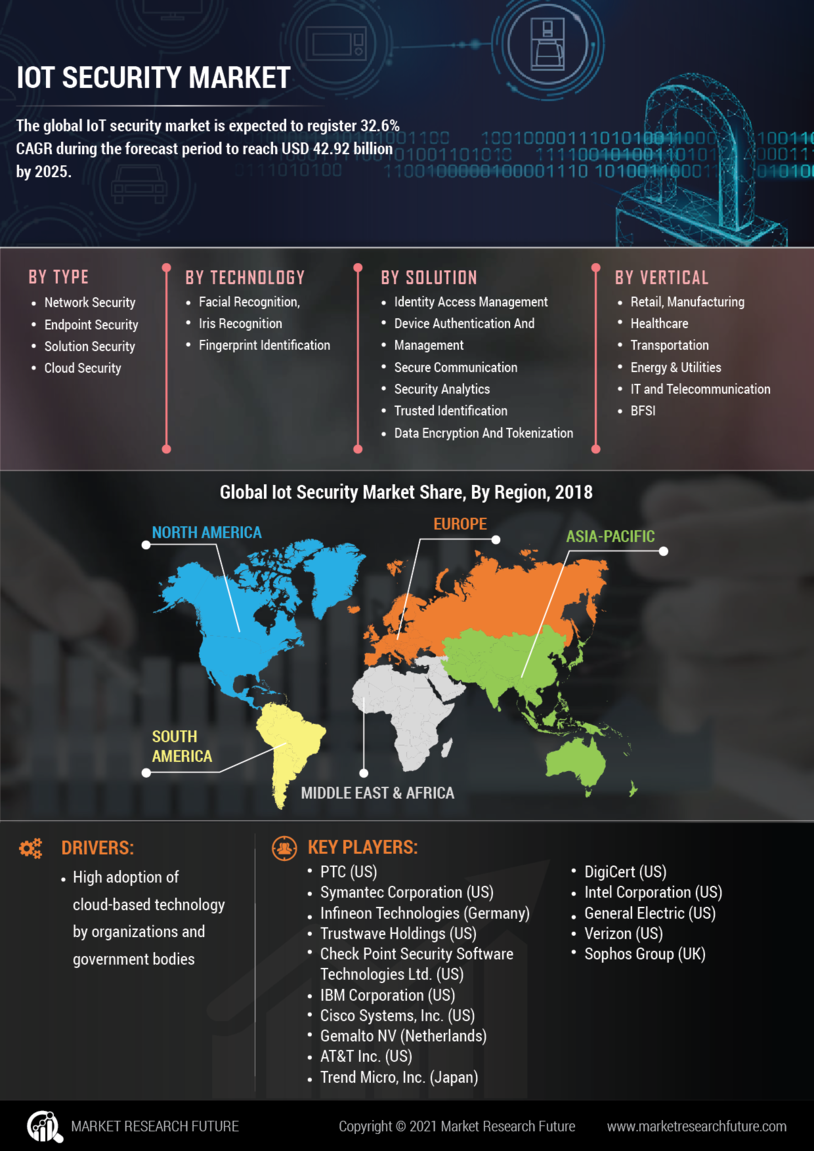Regulatory Pressures
Regulatory compliance is becoming increasingly critical within the IOT Security Market. Governments and regulatory bodies are implementing stringent data protection laws, such as the General Data Protection Regulation (GDPR) and the California Consumer Privacy Act (CCPA). These regulations mandate that organizations adopt specific security measures to protect consumer data, thereby driving the demand for IOT security solutions. Companies that fail to comply with these regulations face hefty fines and reputational damage, which could significantly impact their market position. As a result, businesses are prioritizing investments in IOT security technologies to ensure compliance and mitigate risks associated with data breaches. This regulatory landscape is likely to continue influencing the growth trajectory of the IOT Security Market.
Rising Cyber Threats
The IOT Security Market is experiencing a surge in demand due to the increasing frequency and sophistication of cyber threats. As more devices connect to the internet, the attack surface expands, making it imperative for organizations to invest in robust security solutions. Reports indicate that cybercrime is projected to cost businesses trillions annually, underscoring the urgency for effective IOT security measures. This trend is likely to drive innovation and investment in security technologies, as companies seek to protect sensitive data and maintain consumer trust. The growing awareness of potential vulnerabilities in IOT devices further propels the need for comprehensive security frameworks, thereby shaping the landscape of the IOT Security Market.
Adoption of Smart Devices
The proliferation of smart devices is a key driver of the IOT Security Market. As households and businesses increasingly adopt smart technologies, the number of connected devices continues to rise exponentially. According to industry estimates, the number of connected devices is expected to reach over 75 billion by 2025. This rapid expansion creates a pressing need for effective security solutions to safeguard these devices from potential threats. Manufacturers and service providers are responding by developing advanced security protocols and solutions tailored to the unique challenges posed by IOT devices. Consequently, the demand for IOT security solutions is likely to grow, as stakeholders recognize the importance of protecting their investments in smart technology.
Emergence of 5G Technology
The rollout of 5G technology is poised to transform the IOT Security Market. With its promise of faster speeds and lower latency, 5G is expected to facilitate the deployment of more advanced IOT applications. However, this technological advancement also introduces new security challenges, as the increased connectivity may lead to greater vulnerabilities. As organizations leverage 5G to enhance their operations, the need for robust security measures becomes paramount. This duality of opportunity and risk is likely to drive demand for innovative IOT security solutions that can address the complexities introduced by 5G networks. Consequently, the emergence of 5G technology is anticipated to significantly influence the trajectory of the IOT Security Market.
Increased Investment in Cybersecurity
Investment in cybersecurity is witnessing a notable uptick, significantly impacting the IOT Security Market. Organizations are allocating larger portions of their budgets to cybersecurity initiatives, recognizing the critical need to protect their digital assets. Recent data suggests that global spending on cybersecurity is projected to exceed $300 billion by 2024, with a substantial portion directed towards IOT security solutions. This trend reflects a growing acknowledgment of the potential financial and reputational repercussions of cyber incidents. As businesses strive to enhance their security postures, the demand for innovative IOT security technologies is expected to rise, further propelling the growth of the IOT Security Market.

















Leave a Comment